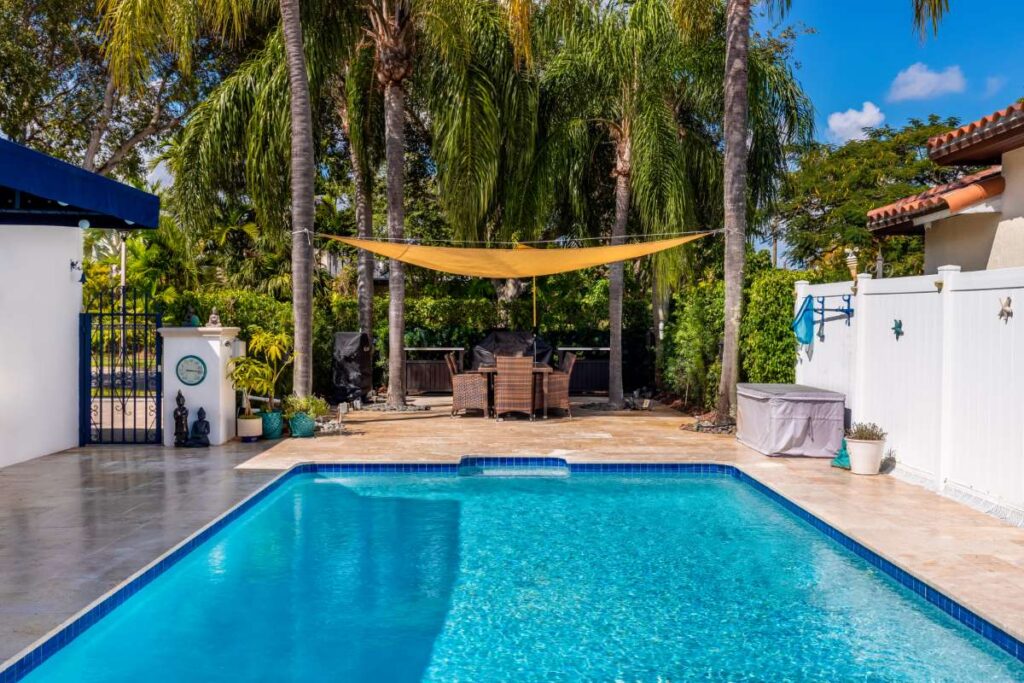Automated email follow-ups can transform your pool business, increasing client retention and boosting sales effortlessly.
Building Your Pool Business Through Automated Email Follow-Ups
In an era where customer experience is paramount, the importance of effective communication cannot be overstated. Automated email follow-ups have emerged as a crucial strategy for pool service businesses looking to enhance client engagement, streamline processes, and ultimately drive sales. This blog post will delve into the significance of automated email follow-ups, explore how they can be implemented effectively, and provide best practices to maximize their impact on your pool business.
As a pool service provider, you understand the cyclical nature of your business. Clients may require regular maintenance, emergency services, or seasonal cleanings, and staying top-of-mind is essential for securing repeat business. Automated email follow-ups not only ensure that your clients receive timely reminders and updates, but they also foster a sense of professionalism and reliability. In this article, we will discuss the fundamentals of automated email follow-ups, how to craft the perfect follow-up emails, and the role of technology, such as [Pool Biller Software](https://ezpoolbiller.com/), in streamlining this process.
The Importance of Automated Email Follow-Ups
Understanding the importance of automated email follow-ups is the first step towards integrating them into your pool business strategy. One of the primary benefits of utilizing automated emails is their ability to nurture relationships with clients. Regular communication helps to keep your services at the forefront of their minds. A study conducted by HubSpot found that companies that engaged with their customers through email increased their revenue by 20%.
Furthermore, automated email follow-ups can significantly reduce the time spent on client communication. Instead of manually sending out reminders and follow-ups, automation allows you to focus on providing quality services. This efficiency not only saves time but also eliminates human error, ensuring that your clients receive the correct information when they need it.
Lastly, automated emails provide valuable opportunities for upselling and cross-selling. By sending targeted follow-up emails that highlight additional services or promotions, you can increase your revenue per client. For example, if a client recently had their pool cleaned, you might follow up with an offer for a discounted chemical treatment, thereby increasing their overall satisfaction and loyalty to your brand.
Crafting Effective Follow-Up Emails
Creating effective follow-up emails requires a blend of personalization, clarity, and persuasive language. Start by addressing the client by name, which immediately makes the message feel more personal and engaging. For instance, instead of a generic greeting, use “Hi John,” to establish a connection.
Next, ensure your message is clear and concise. Clients appreciate brevity, especially when they receive multiple emails daily. Outline the purpose of your email at the beginning, whether it’s a reminder for an upcoming service, a thank you note, or a special offer. Providing all essential details right away, such as dates, services provided, and payment information, can prevent any confusion and enhance the client’s experience.
Including a call to action (CTA) is crucial in follow-up emails. Whether you want clients to book a service, provide feedback, or take advantage of a promotional offer, your CTA should be clear and compelling. For example, you might say, “Click here to schedule your next pool maintenance visit and receive 10% off!” This not only drives engagement but also encourages clients to take immediate action.
Leveraging Technology for Email Automation
To effectively implement automated email follow-ups, leveraging technology is essential. Investing in software solutions such as [Pool Biller Software](https://ezpoolbiller.com/) can streamline this process significantly. Such platforms allow pool service businesses to set up automated email sequences based on specific triggers, such as service completion dates or client interactions.
Using a software solution can also help you segment your clients based on their service history or preferences, allowing for more targeted communication. For example, you can create segments for clients who regularly use your cleaning services and send them tailored follow-up emails that reflect their needs.
Moreover, tools that provide analytics can help you evaluate the effectiveness of your follow-up emails. Monitoring open rates, click-through rates, and conversion rates will enable you to adjust your strategy and content accordingly, ensuring that you continue to meet your clients’ needs effectively.
Best Practices for Automated Email Follow-Ups
Implementing best practices for automated email follow-ups can significantly enhance their effectiveness. Firstly, scheduling your emails to be sent at optimal times is crucial. Research indicates that emails sent mid-week, particularly on Tuesdays and Wednesdays, tend to have higher open rates. Experimenting with different send times and analyzing the results can help you find the perfect timing for your audience.
Secondly, ensure your emails are mobile-friendly. With a significant percentage of users checking emails on their mobile devices, having a responsive design can improve readability and engagement. This includes using concise subject lines, clear fonts, and easily clickable buttons.
Thirdly, continually test and refine your email content. A/B testing different subject lines or email formats can provide insights into what resonates best with your audience. For instance, you might test a subject line that highlights a discount versus one that focuses on a service reminder. Over time, these insights will help you craft emails that better engage your clients.
Integrating Follow-Ups into Your Service Workflow
For automated email follow-ups to be effective, they must be seamlessly integrated into your existing service workflow. Begin by mapping out your client journey and identifying touchpoints where follow-ups would enhance the client experience. This includes initial service bookings, reminders for recurring service dates, and post-service thank you emails.
Consider setting up a standard operating procedure for follow-ups, ensuring that every team member understands when and how to utilize automated emails. For instance, after completing a service, the technician could trigger an email that thanks the client for their business, provides a summary of the services performed, and invites them to schedule their next appointment.
Additionally, encourage feedback through your follow-up emails. Asking clients to share their experiences not only demonstrates that you value their opinions but also provides you with valuable insights to improve your services. Incorporating a simple survey link in your emails can facilitate this process.
Utilizing Customer Segmentation for Targeted Follow-Ups
Customer segmentation is a powerful strategy that can enhance the effectiveness of your automated follow-ups. By categorizing clients based on their service usage, preferences, and behaviors, you can tailor your emails to meet their specific needs. For example, clients who regularly use your maintenance services may appreciate tips for keeping their pools clean between visits.
Creating targeted email campaigns for different segments can also improve engagement rates. If you have a segment of clients who are new to your services, sending a series of welcome emails with helpful tips and an overview of your offerings can build a strong relationship right from the start.
Moreover, targeted promotions can drive additional revenue. If you notice that certain clients have not utilized a specific service in a while, sending them an email with a limited-time offer for that service can spur action. For instance, “We’ve missed you! Enjoy 15% off your next pool cleaning service – just for our loyal clients!” can be an effective way to re-engage your audience.
Conclusion
In conclusion, automated email follow-ups are a vital tool for building and sustaining your pool service business. They not only enhance client engagement and communication but also streamline operations, allowing you to focus on what matters most—delivering excellent service.
Integrating automation into your follow-up process with tools like [Pool Biller Software](https://ezpoolbiller.com/) can save you time, reduce errors, and improve overall professionalism. By crafting effective emails, leveraging technology, and following best practices, you can create a robust email follow-up strategy that drives client retention and boosts business growth.
Now is the time to embrace the power of automated follow-ups. Start implementing these strategies today, and watch your pool business thrive in an increasingly competitive market!




